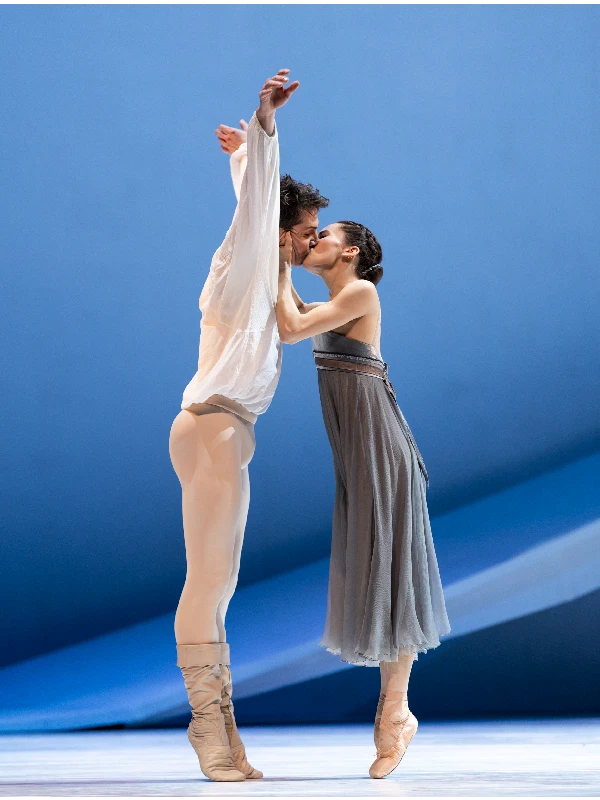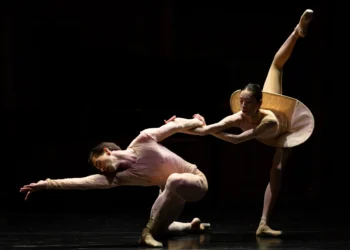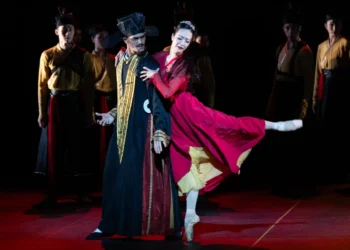PNB Roméo et Juliette Review
April 24, 2025 | Digital
Less a lateral adaptation than a judicious excavation of the source material’s affective landscape, Jean-Christophe Maillot’s Roméo et Juliette is Shakespeare’s centuries-old story like you’ve never experienced it before.
A bit of backstory: Roméo et Juliette premiered at the Les Ballets de Monte-Carlo in December of 1996 and premiered at the Seattle-based Pacific Northwest Ballet in January 2008. Since then, it has become a return favorite.
You may also like...
Ballet Nights Bound in Motion Review: Continuing to Break Boundaries
Ballet Nights Bound in Motion is a diverse production of stunning music in partnership with exquisite dance that leaves the audience wanting more.
Hong Kong Ballet Review: The Butterfly Lovers Loses the Plot
Critical narrative details were absent in Hong Kong Ballet’s The Butterfly Lovers despite Tim Yip’s clever and captivating set and costume designs.
PNB Roméo et Juliette Review
Perhaps most striking is the unvarnished simplicity of it all.
The set (designed by Ernest Pignon-Ernest), for one, is little more than a collection of plain, white panels and a solitary ramp that continuously morph to define each scene.
The costumes (designed by Jérôme Kaplan) too are aesthetically muted; the mostly dichromatic garbs do not so much beg for attention as they leverage contrasting colors to distinguish the families.
By deliberately tempering the design elements, Maillot makes room for the emotionality of the narrative to be amped to the max.
For all its abstractions and omissions, the ballet is dramatically lucid. Iconic flashpoints such as the balcony and bedroom scenes are easily perceptible, and the characterization is remarkably sharp. When it comes to death, the depictions are absolutely sinister and disturbingly vivid.

The role of Romeo seems to come to Lucien Postlewaite utterly naturally. An instinctive performer, his movement is marked by a discernible lightness and ease.
His star-crossed lover, danced by Clara Ruf Maldonado, is equally adeptly cast. Maldonado’s Juliet is above all full of vitality and wonder. As the plot progresses, however, there’s a clear shift in her dancing; her at first bold playfulness evolves into a more considered presence, mirroring her character’s emotional maturation.
Dancing together, they make you want to believe in the idea of love at first sight.
But really it’s the supporting leads who stole the show – Sarah-Gabrielle Ryan as the endearingly frazzled nurse, Kyle Davis and Christian Poppe as Romeo’s rollicking mates, and Jonathan Batista as the bellicose Tybalt.
While Batista has proven a venerable prince in recent programs, it was a welcome change to see him in a role that showed off his acting skills. Personally, I’d be eager to see him cast in more character-driven parts like this.

Maillot’s Roméo et Juliette isn’t perfect, however. For one thing, the significance of Friar Laurence as the silent strategist fell flat for me. While Miles Pertl danced very well as Paris, the character lacked definition.
Finally, when it comes to sexuality, a more dialed back approach could have conveyed the same story without challenging more reserved sensibilities. Admittedly, these are minor critiques and should not detract from the overall excellence of the ballet.
Featured Photo of Pacific Northwest Ballet’s Clara Ruf Maldonado and Lucien Postlewaite in Jean-Christophe Maillot’s Roméo et Juliette. Photo © Angela Sterling.










